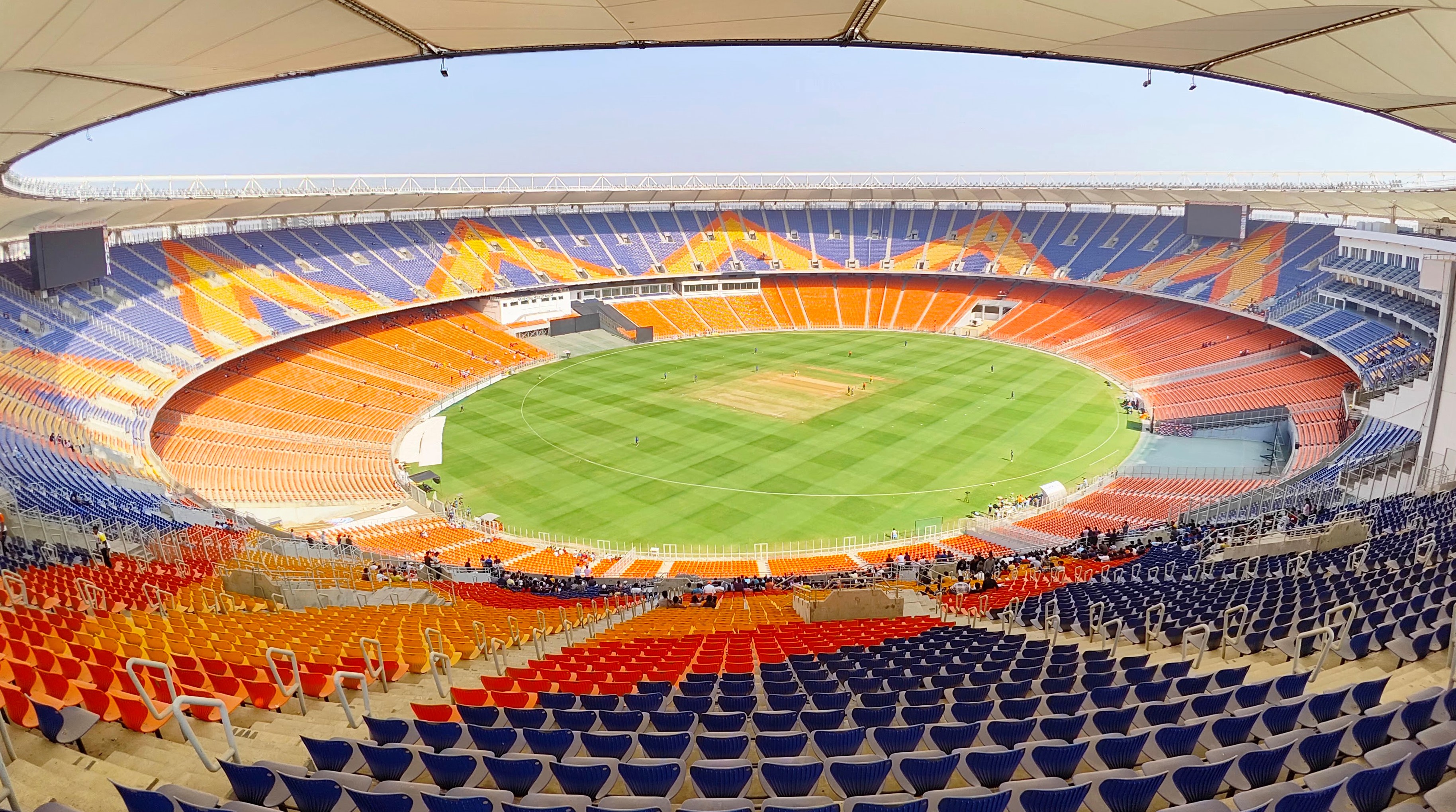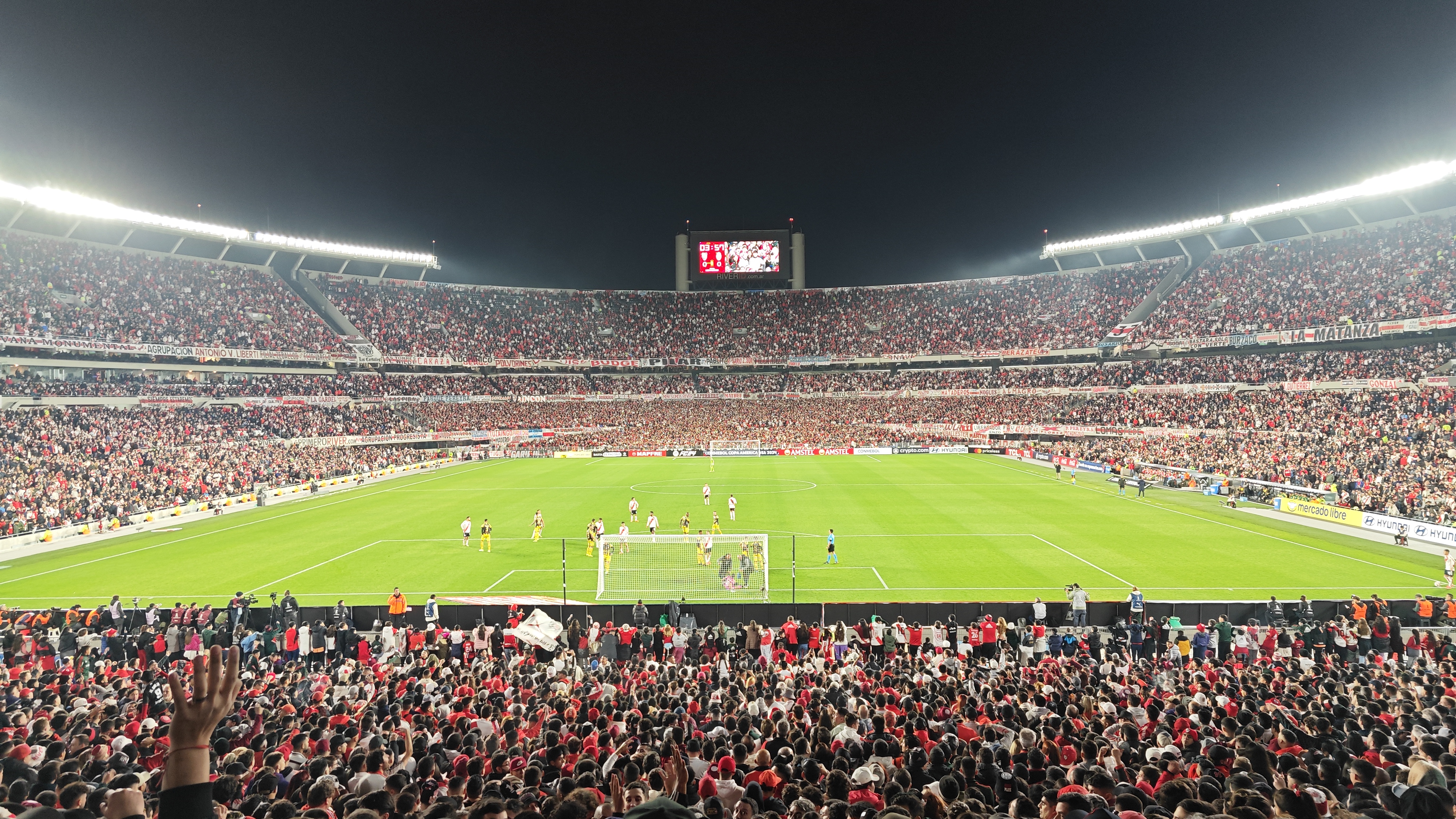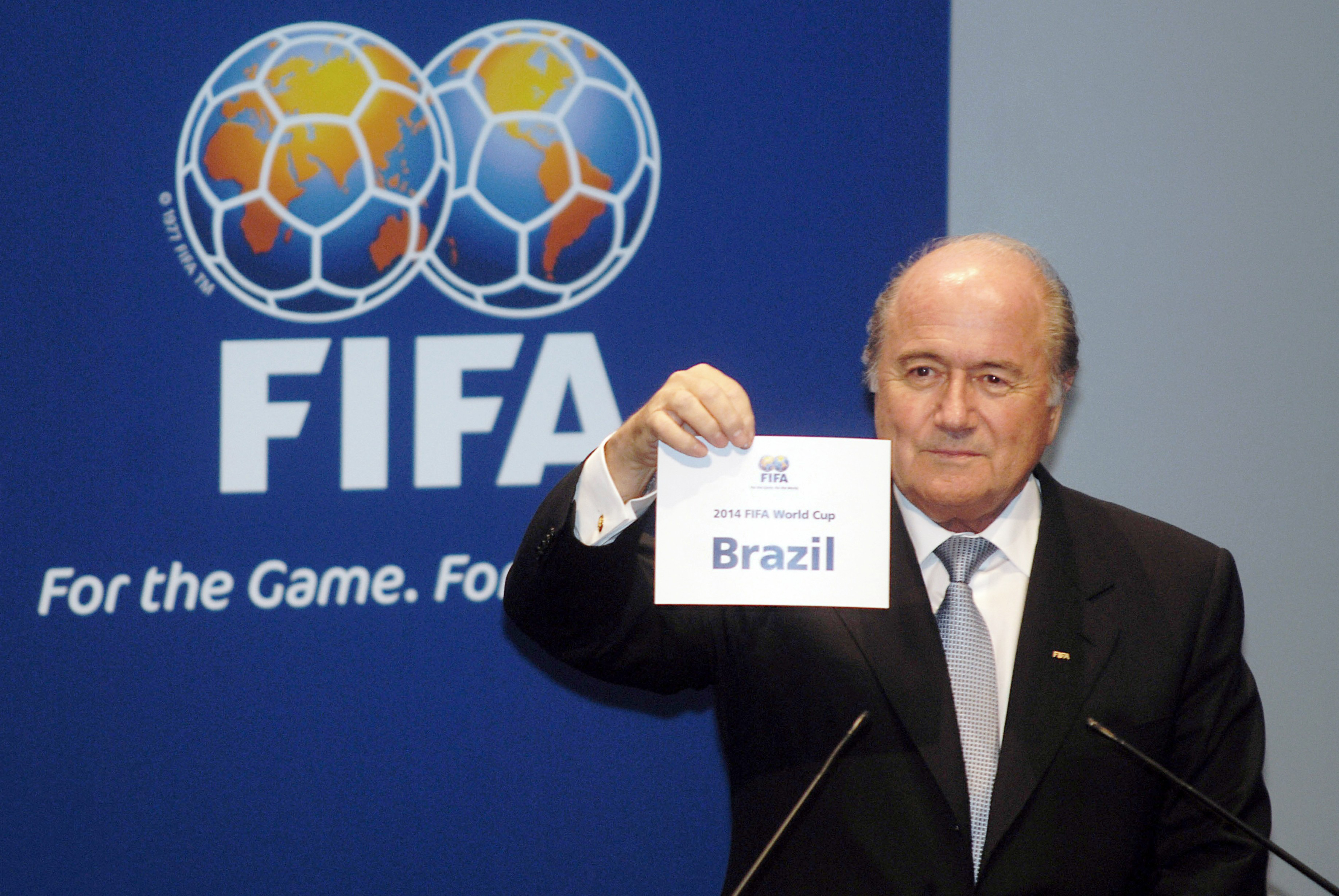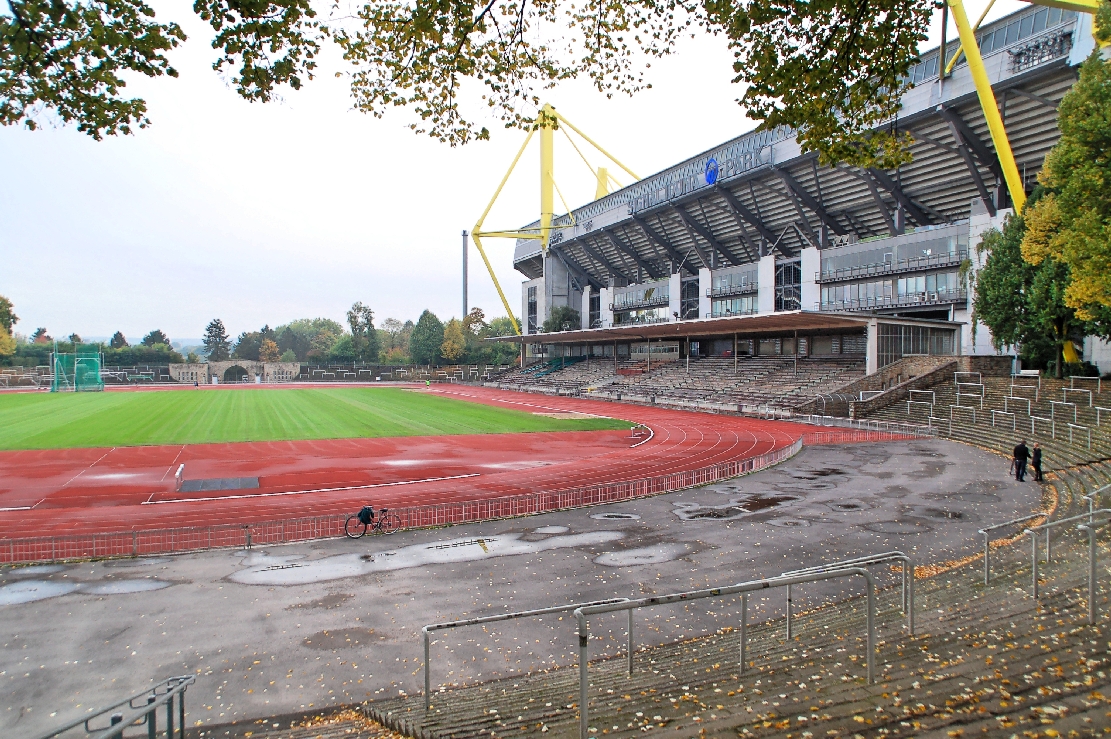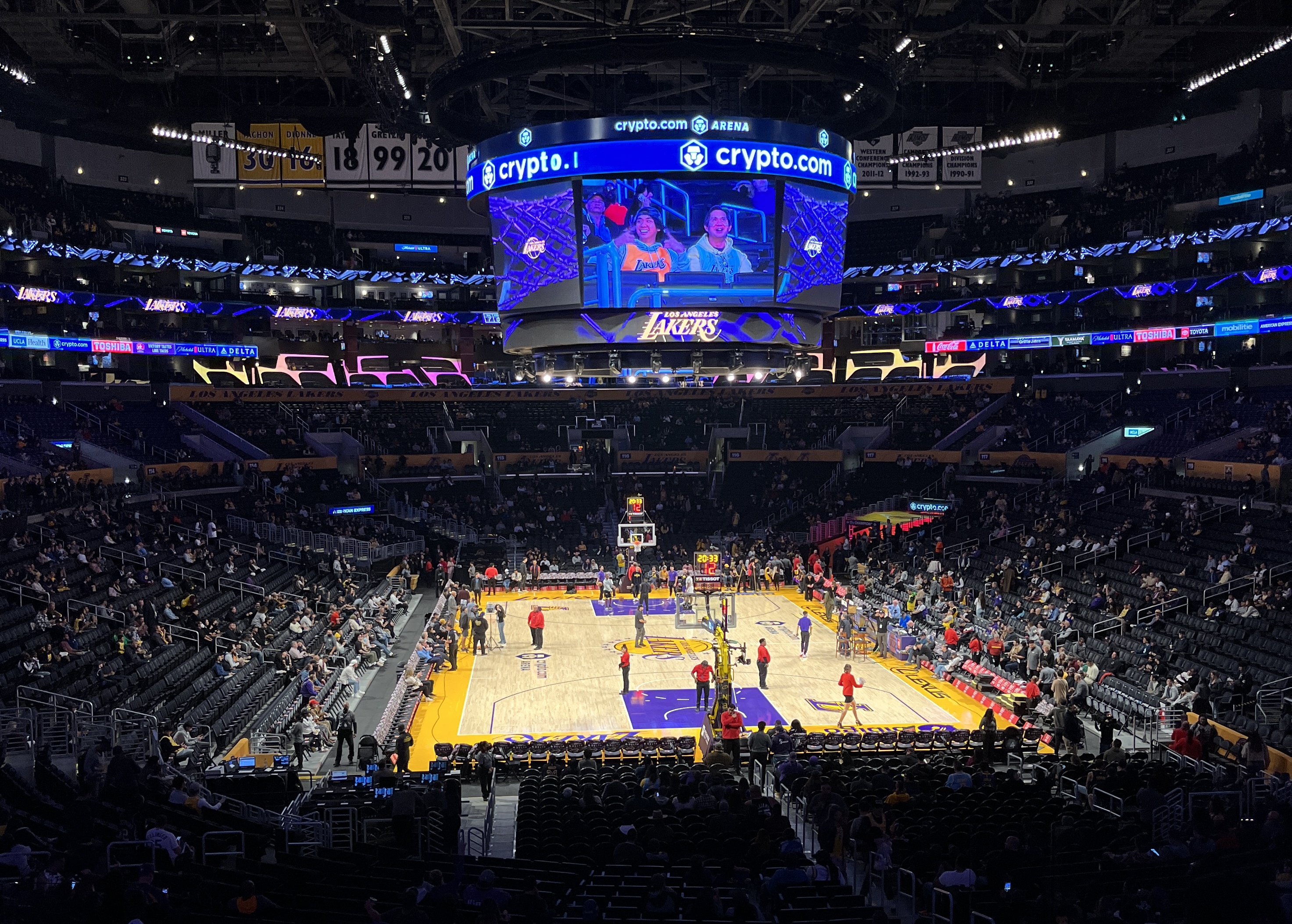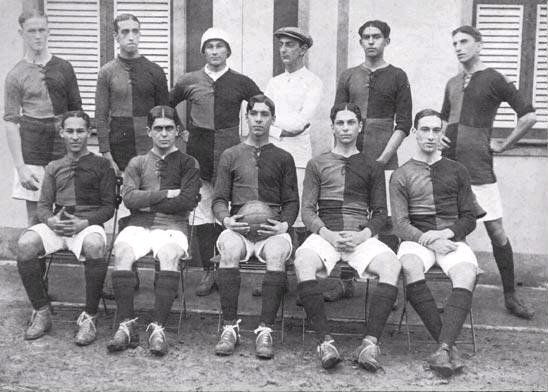|
Maracanã Stadium
Maracanã Stadium (, ; named after the Maracanã River), officially known as Jornalista Mário Filho Stadium (, ; , named after Mário Filho), is an association football stadium in Rio de Janeiro, Brazil. Located in the Maracanã neighborhood, it is owned by the Rio de Janeiro state government and managed by the clubs Fluminense and Flamengo. It is part of a complex that includes an arena known by the name of Maracanãzinho. The stadium was opened in 1950 to host the FIFA World Cup, in which Brazil was beaten 2–1 by Uruguay in the deciding game, in front of a still standing record attendance of 173,850 spectators, on 16 July 1950. The venue has seen attendances of 150,000 or more at 26 occasions and has seen crowds of more than 100,000 as many as 284 times. But as terraced sections have been replaced with seats over time, and after the renovation for the 2014 FIFA World Cup, its original capacity has been reduced to the current 73,139, but it remains the largest s ... [...More Info...] [...Related Items...] OR: [Wikipedia] [Google] [Baidu] |
Athletics At The 2016 Summer Olympics
Athletics at the 2016 Summer Olympics were held during the last 10 days of the games, from 12 to 21 August 2016, at the Estádio Olímpico Nilton Santos, Olympic Stadium. The sport of athletics at the 2016 Summer Olympics was made into three distinct sets of events: track and field events, road running events, and racewalking events. Competition schedule Track and field events were held at Estádio Olímpico Nilton Santos, João Havelange Olympic Stadium, while the race walks and marathon start and finish in Pontal Beach in the Recreio dos Bandeirantes neighbourhood and the Sambadrome Marquês de Sapucaí, respectively. Apart from the race walks and marathon, ten track and field events held finals in the morning sessions for the first time since 1988 Summer Olympics, 1988. This change was implemented upon the request of the Rio 2016 Organizing Committee (COJOP Rio 2016) and the Olympic Broadcasting Services to be supported by the International Olympic Committee, ensuring that ... [...More Info...] [...Related Items...] OR: [Wikipedia] [Google] [Baidu] |
Stadium
A stadium (: stadiums or stadia) is a place or venue for (mostly) outdoor sports, concerts, or other events and consists of a field or stage completely or partially surrounded by a tiered structure designed to allow spectators to stand or sit and view the event. Pausanias noted that for about half a century the only event at the ancient Greek Olympic festival was the race that comprised one length of the stadion at Olympia, where the word "stadium" originated. Most of the stadiums with a capacity of at least 10,000 are used for association football. Other popular stadium sports include gridiron football, baseball, cricket, the various codes of rugby, field lacrosse, bandy, and bullfighting. Many large sports venues are also used for concerts. Etymology "Stadium" is the Latin form of the Greek word " stadion" (''στάδιον''), a measure of length equalling the length of 600 human feet. As feet are of variable length the exact length of a stadion depends on the ex ... [...More Info...] [...Related Items...] OR: [Wikipedia] [Google] [Baidu] |
List Of South American Stadiums By Capacity
The following is an incomplete list of South American stadiums. They are ordered by their total capacity, that is the maximum number of spectators the stadium can accommodate (all-seater). Stadiums with a capacity of 30,000 or more are included. Most large stadiums in South America are used for association football, with some having running tracks for Athletics (sport), athletics. List {{row counter, {, class{{="wikitable sortable" , - !Rank !Stadium !Capacity !Country !City !Tenants !Opening !Image , - , _row_count , Estadio Monumental Antonio Vespucio Liberti, Estadio Más Monumental , {{center, 85,018 , {{flag, Argentina , Buenos Aires , Club Atlético River Plate, River Plate, Argentina national football team , {{center, 1938 , , - , _row_count , Estadio Monumental "U", Estadio Monumental , {{center, 80,093 , {{flag, Peru , Lima , Club Universitario de Deportes, Universitario , {{center, 2000 , , - , _row_count , Estádio Jornalista Mário Filho , {{center, 73,139{{cite ... [...More Info...] [...Related Items...] OR: [Wikipedia] [Google] [Baidu] |
List Of Football Stadiums In Brazil
The following is a list of Association football, football stadiums in Brazil, ordered by capacity. Current stadiums with a capacity of 5,000 or more are included. Current stadiums See also * List of association football stadiums by country * List of sports venues by capacity * Lists of stadiums * Football in Brazil References {{South America topic, List of football stadiums in Lists of association football stadiums, Brazil Football in Brazil lists, Stadiums Football venues in Brazil, Lists of buildings and structures in Brazil, Football stadiums ... [...More Info...] [...Related Items...] OR: [Wikipedia] [Google] [Baidu] |
2014 FIFA World Cup
The 2014 FIFA World Cup was the 20th FIFA World Cup, the quadrennial world championship for list of men's national association football teams, men's national Association football, football teams organised by FIFA. It took place in Brazil from 12 June to 13 July 2014, after the country was awarded the hosting rights in 2007. It was the second time that Brazil staged the competition, the first being in 1950 FIFA World Cup, 1950, and the fifth time that it was held in South America. 31 national teams advanced through 2014 FIFA World Cup qualification, qualification competitions to join the host nation in the final tournament (with Bosnia and Herzegovina national football team, Bosnia and Herzegovina as the only debutant). A total of 64 matches were played in 12 venues located in as many host cities across Brazil. For the first time at a World Cup finals, match officials used goal-line technology, as well as vanishing spray for Direct free kick, free kicks. FIFA Fan Fests in eac ... [...More Info...] [...Related Items...] OR: [Wikipedia] [Google] [Baidu] |
Terrace (stadium)
A terrace or terracing in sporting terms refers to the standing area of a sports stadium, particularly in the United Kingdom and Republic of Ireland. It is a series of concrete steps, with intermittent safety barriers installed at specific locations to prevent an excessive movement of people down its slope. Terraces carry particular importance in association football, football stadiums, where they have tended to be located in the areas behind the two goals as a cheaper alternative to sitting in the stands which were traditionally located at the sides of the football pitch, field. As standing on the terraces was cheaper and provided a greater degree of freedom to move and congregate with fellow supporters, over the decades of the 20th century they became the most popular areas for younger working class men and teenage boys to watch the games. After the Hillsborough disaster and subsequent Taylor report, terraces were banned from football grounds in the English football league sy ... [...More Info...] [...Related Items...] OR: [Wikipedia] [Google] [Baidu] |
Uruguay
Uruguay, officially the Oriental Republic of Uruguay, is a country in South America. It shares borders with Argentina to its west and southwest and Brazil to its north and northeast, while bordering the Río de la Plata to the south and the Atlantic Ocean to the southeast. It is part of the Southern Cone region of South America. Uruguay covers an area of approximately . It has a population of almost 3.5 million people, of whom nearly 2 million live in Montevideo metropolitan area, the metropolitan area of its capital and List of cities in Uruguay, largest city, Montevideo. The area that became Uruguay was first inhabited by groups of hunter gatherer, hunter gatherers 13,000 years ago. The first European explorer to reach the region was Juan Díaz de Solís in 1516, but the area was colonized later than its neighbors. At the time of Spanish colonization of the Americas, European arrival, the Charrúa were the predominant tribe, alongside other groups such as the Guaraní people ... [...More Info...] [...Related Items...] OR: [Wikipedia] [Google] [Baidu] |
Uruguay V Brazil (1950 FIFA World Cup)
The match between Uruguay national football team, Uruguay and Brazil national football team, Brazil was the decisive match of the final stage at the 1950 FIFA World Cup. It was played at the Maracanã Stadium in the then-capital of Brazil, Rio de Janeiro, on 16 July 1950. Unlike in other editions of the tournament, which conclude with a one-off List of FIFA World Cup finals, final, the 1950 winner was determined by 1950 FIFA World Cup final round, a final group stage, where four teams played in a Round-robin tournament, round-robin format. With Brazil topping the group, one point ahead of Uruguay going into the final round of matches, Uruguay needed a win while Brazil needed only to avoid defeat to become the world champions; neither of the other two teams, Spain and Sweden, could finish first. Thus, the match is often regarded as the ''de facto'' final of the 1950 World Cup. Uruguay won 2–1; Brazil took the lead shortly after half-time thanks to a goal by Friaça, but Juan Al ... [...More Info...] [...Related Items...] OR: [Wikipedia] [Google] [Baidu] |
1950 FIFA World Cup
The 1950 FIFA World Cup was the 4th edition of the FIFA World Cup, the quadrennial international Association football, football championship for senior men's national teams. It was held in Brazil from 24 June to 16 July 1950. It was the first World Cup tournament in over twelve years, as the 1942 and 1946 World Cups were cancelled due to World War II. Italy national football team, Italy, the two-time defending champions, were eliminated in the first round for the first time in history. Uruguay national football team, Uruguay, who had won the inaugural competition in 1930 FIFA World Cup, 1930, defeated the host nation, Brazil national football team, Brazil, in the deciding match of the four-team group of the final round, causing what is sometimes known as one of the biggest Upset (sport), upsets in sports history, occasionally called the Uruguay v Brazil (1950 FIFA World Cup), Maracanaço. This was the only tournament not decided by a one-match final. It was also the inaugural tour ... [...More Info...] [...Related Items...] OR: [Wikipedia] [Google] [Baidu] |
Ginásio Do Maracanãzinho
Ginásio Gilberto Cardoso or Ginásio do Maracanãzinho, commonly known as the Maracanãzinho ("Little Maracanã" or "Mini Maracanã"), is an indoor arena located in Maracanã, Rio de Janeiro, Maracanã in the north zone of Rio de Janeiro, Brazil. It is used mostly for volleyball. Its formal name, Ginásio Gilberto Cardoso, honors a former Clube de Regatas do Flamengo president. The capacity of the arena is 11,800 and it was opened in 1954. It stands next to the Maracanã Stadium. History The Maracanãzinho's construction started on April 13, 1954 and lasted five months. It was built by Construtora Prolar S.A. The architects were Rafael Galvão, Pedro Paulo Bernardes Bastos, Orlando Azevedo and Antônio Dias Carneiro, the engineer was Joaquim Cardoso. The gymnasium was inaugurated on September 24, 1954, with 1954 FIBA World Championship, that year's Basketball World Championship, Men's Basketball World Championship, for which it had a capacity for 25,000 spectators. The arena als ... [...More Info...] [...Related Items...] OR: [Wikipedia] [Google] [Baidu] |
Arena
An arena is a large enclosed venue, often circular or oval-shaped, designed to showcase theatre, Music, musical performances or Sport, sporting events. It comprises a large open space surrounded on most or all sides by tiered seating for spectators, and may be covered by a roof. The key feature of an arena is that the event space is the lowest point, allowing maximum visibility. Arenas are usually designed to accommodate a multitude of spectators. Background The word derives from Latin ', a particularly fine-grained sand that covered the floor of ancient arenas such as the Colosseum in Rome, Italy, to absorb blood.. The term ''arena'' is sometimes used as a synonym for a very large venue such as Pasadena's Rose Bowl stadium, Rose Bowl, but such a facility is typically called a ''stadium''. The use of one term over the other has mostly to do with the type of event. Football (be it Association football, association, Rugby football, rugby, Gridiron football, gridiron, Australian ... [...More Info...] [...Related Items...] OR: [Wikipedia] [Google] [Baidu] |
Clube De Regatas Do Flamengo
Clube de Regatas do Flamengo (; ), more commonly referred to as simply Flamengo, is a Brazilian multi sports club based in Rio de Janeiro, in the neighborhood of Gávea. It was founded and named after the Flamengo, Rio de Janeiro, Flamengo neighborhood and is best known for their professional association football, football team. They are one of two clubs to have List of unrelegated association football clubs, never been relegated from the Campeonato Brasileiro Série A, top division, along with São Paulo FC, São Paulo and is the most popular football club in Brazil with more than 46.9 million fans, equivalent to 21.9% of the population that supports a team in Brazil. The club was first established in 1895 specifically as a Rowing (sport), rowing club in the Flamengo neighborhood and did not play their first official football match until 1912. Flamengo's traditional uniform features red and black striped shirts with white shorts, and red and black striped socks. Flamengo has ... [...More Info...] [...Related Items...] OR: [Wikipedia] [Google] [Baidu] |

